Although Massachusetts is known for the Freedom Trail and many Revolutionary War sites, it’s also rich in Civil War history as well.
GREATER BOSTON
CIVIL WAR BOSTON
Boston’s Freedom Trail Foundation is proud to announce the publication of a new guidebook called Walking Tours of Civil War Boston. During the antebellum years, Boston was the hub of the abolitionist movement, and when war came, Bostonians played leading roles, both politically and militarily. Visit places of fiery speeches, jailhouse rescues, anti-slavery protests, the underground railroad, military training, Confederate POWs,
and much more.
_________________________________________________________________________
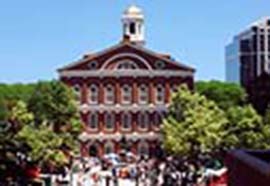
FANEUIL HALL
The hall hosted many abolitionist meetings in the pre-war period and houses works commemorating abolitionist Lucy Stone, Frederick Douglass, Wendell Phillips, and U.S. Senator Charles Sumner.
_________________________________________________________________________
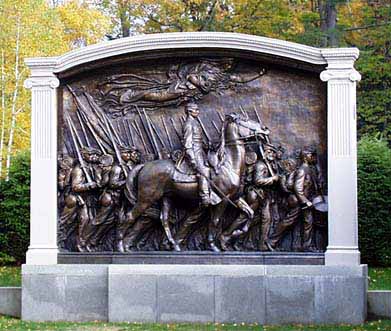
BOSTON AFRICAN-AMERICAN NATIONAL HISTORIC SITE
Boston African American National Historic Site is comprised of the largest area of pre-Civil War black owned structures in the U.S. It has roughly two dozen sites on the north face of Beacon Hill. These historic buildings were homes, businesses, schools, and churches of a thriving black community that, in the face of great opposition, fought the forces of slavery and inequality.
_________________________________________________________________________
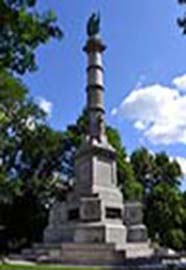
SOLDIERS’ AND SAILORS MONUMENT’
The [Civil War] Soldiers and Sailors Monument is on the hill in Boston Common near the Frog Pond. It was designed by Martin Milmore, and dedicated on September 17th, 1877, when the entire militia force of the State paraded in Boston, and was reviewed by the President of the United States.
_________________________________________________________________________
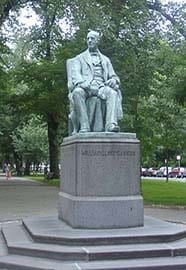
WILLIAM LLOYD GARRISON STATUE AND GRAVE SITE
Prominent American abolitionist, journalist, and social reformer. He became famous in the 1830s for his denunciations of slavery. He is best known as the editor of the radical abolitionist newspaper, The Liberator (1831-1865), helping to lead the successful abolitionist campaign against slavery in the United States, and as one of the founders of the American Anti-Slavery Society. He promoted “immediate emancipation” of slaves in the United States.
_________________________________________________________________________
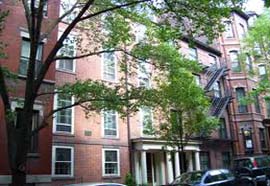
CHARLES SUMNER HOUSE, STATUE, AND GRAVE SITE
An American politician and statesman from Massachusetts, an academic lawyer, and a powerful orator, Sumner was the leader of the antislavery forces in Massachusetts and a leader of the Radical Republicans in the United States Senate during the American Civil War and Reconstruction, working to punish the ex-Confederates and guarantee equal rights to the Freedmen.
_________________________________________________________________________

CHARLESTOWN NAVY YARD
Serving as the starting point of many sailors’ Civil War journeys, some of the Union’s most celebrated vessels were built on this site, including the steam frigate Merrimack (later captured by the Confederacy), the screw sloop Hartford, and the double-turreted monitor Monadnock. The yard also supported squadrons blockading Southern ports and harbors. Thanks to the work completed at the navy yard, the United States emerged from the Civil War with the world’s largest and most powerful navy.
_________________________________________________________________________

FORT WARREN, GEORGES ISLAND
A historic Civil War fort that was also utilized as a prison for Confederate military and political prisoners. The fort continued to serve as an important U.S. Army harbor defense facility from the Civil War throughout World Wars I and II. Fort Warren was under federal government control until 1958, when the Commonwealth obtained possession.
METRO WEST

EDGELL MEMORIAL LIBRARY/FRAMINGHAM HISTORY CENTER
Dedicated in 1873 to Civil War soldiers, this Victorian Gothic-style building and anchor of the Framingham Common houses the Framingham History Center, which displays numerous artifacts and memorabilia illustrating Framingham citizens’ deep and influential involvement both in the abolition movement and the Civil War, including the special exhibit, “Framingham Remembers the Civil War.”
_________________________________________________________________________

SAXONVILLE MILLS
These mills were one of the major national suppliers of sky-blue Kersey, the heavy wool fabric for the Union Army. In 1865, 800 workers here used Sudbury River dam power to produce 1.5-million yards of blanket material, army cloth, and wool yarn.
_________________________________________________________________________

PLYMOUTH CHURCH
The Framingham Anti-Slavery Society was founded here in 1837 and the church was the site of the first public singing of the Battle Hymn of the Republic, in 1862 (on George Washington’s 130th birthday). Julia Ward Howe, who wrote the lyrics, had family ties to Framingham and spoke at anti-slavery meetings in town.
_________________________________________________________________________

THE JOHN BROWN BELL
Taken in 1862 from Harper’s Harper’s Ferry, Virginia—site of John Brown’s 1859 raid—by a Union Army unit from Marlborough, the bell remains in the possession of the city of Marlborough to this day and can be seen downtown.
_________________________________________________________________________
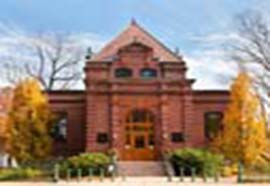
NATICK HISTORICAL SOCIETY MUSEUM
The collection includes memorabilia of distinguished Natick citizens involved in the Civil War, including Harriet Beecher Stowe, author of Uncle Tom’s Cabin, and her fellow abolitionist Henry Wilson, Chairman of the Senate Committee on Military Affairs throughout the War and Vice President under Ulysses S. Grant.
NORTH OF BOSTON & GREATER MERRIMACK VALLEY
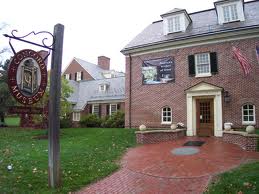
CONCORD MUSEUM
Before the war many escaping slaves were smuggled through Concord. The museum features a collection of Civil War era portraits, firearms, correspondence, and many other artifacts.
CAPE COD & THE ISLANDS
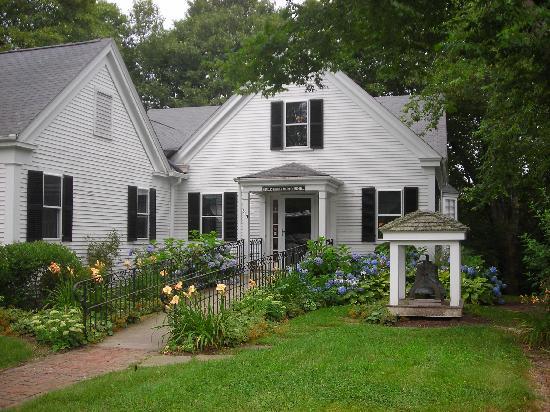
CENTERVILLE HISTORICAL MUSEUM
Centerville lost 31 men during the Civil War. An ongoing exhibit contains weapons, diaries, and photos.
_________________________________________________________________________
CENTRAL MASSACHUSETTS
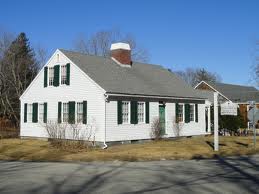
CLARA BARTON BIRTHPLACE MUSEUM
Before she founded the American Red Cross, she helped union troops by delivering sanitary supplies. Later, upon the request of President Lincoln, Barton searched and identified missing soldiers.
WESTERN MASSACHUSETTS

SOJOURNER TRUTH IN FLORENCE
Sojourner Truth, a former slave who lived in Florence, MA in the mid-1800s, was a nationally known advocate for equality and justice. Today you can view the statue or take a walking tour that highlights Truth’s role in American history.
_________________________________________________________________________

MUM BETT AND THE ASHLEY HOUSE
Elizabeth Freeman, in early life known as Bett and later Mum Bett (c.1742 – 1829), was among the first black slaves in Massachusetts to file a “freedom suit” and win in court, with a ruling that slavery was illegal. The Ashley House tells the intertwined stories of the Ashleys and the enslaved African Americans who lived here in the 18th century.
_________________________________________________________________________
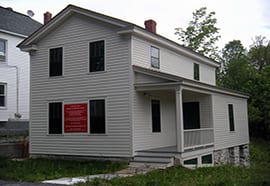
SAMUEL HARRISON HOUSE
During the Civil War Samuel Harrison went head to head with Abraham Lincoln over equal pay for blacks serving in the Union Army, and won. And in June of 1864, Congress granted equal pay for the 180,000 blacks who fought on the side of the North. Rev. Harrison knew first-hand how badly blacks were treated in the military. He served as chaplain of the famed Massachusetts 54th Regiment, the first all black infantry to fight in the Civil War.
_________________________________________________________________________
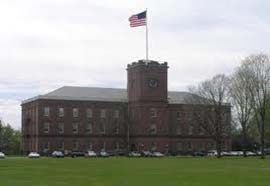
SPRINGFIELD ARMORY
The Springfield Armory manufactured the most popular rifle for union soldiers because of their size and weight. The soldiers even referred to their weapons as Springfields. Today the armory houses a museum which features a historic arms collection.
_________________________________________________________________________

SUSAN B. ANTHONY BIRTHPLACE MUSEUM
Although she may be best known for her work as a suffragette, Susan B. Anthony also formed the Women’s Loyal League, which worked to pass a Constitutional amendment abolishing slavery.
_________________________________________________________________________
UNDERGROUND RAILROAD
Visit these National Park Service Underground Railroad Sites
BEYOND MASSACHUSETTS
TOURS
Second Saturday Walking Tour of Florence Abolition Era Sites
Visit the homes of Sojourner Truth, Samuel Hill and fugitive slave Basil Dorsey. See the Mill River dam where David Lee and Lydia Maria Child processed sugar beets as an alternative to slave-grown sugar cane. Stand in the Pine Grove where William Lloyd Garrison and Wendell Phillips spoke before members of the Northampton Association “utopian” community. Hear about David Ruggles’ Water Cure and the visits of Frederick Douglass. Donations benefit the David Ruggles Center. These tours are offered the second Saturday of the month from June through November. All tours meet at the Sojourner Truth Memorial Statue, 10 a.m., corner of Park and Pine Streets, Florence.